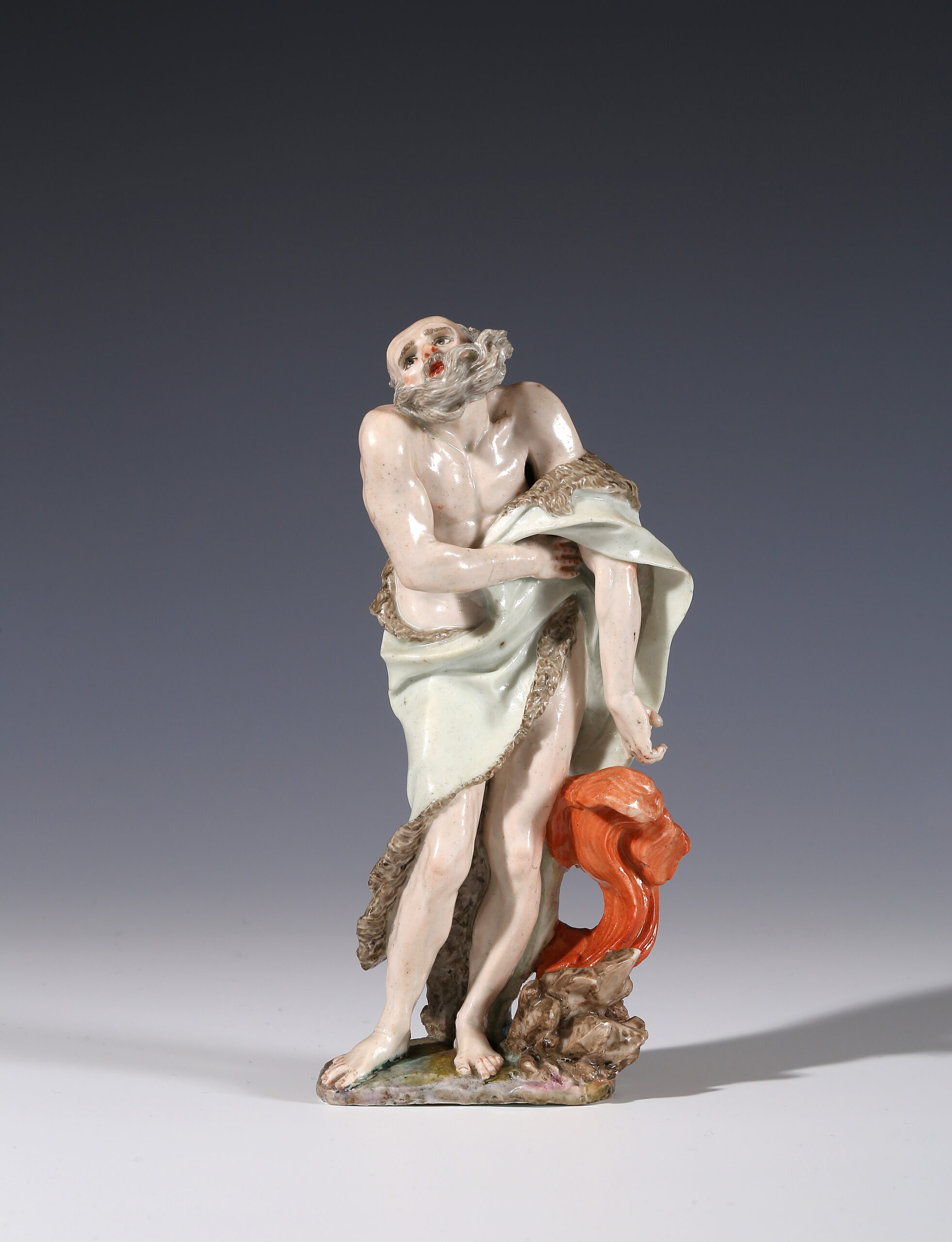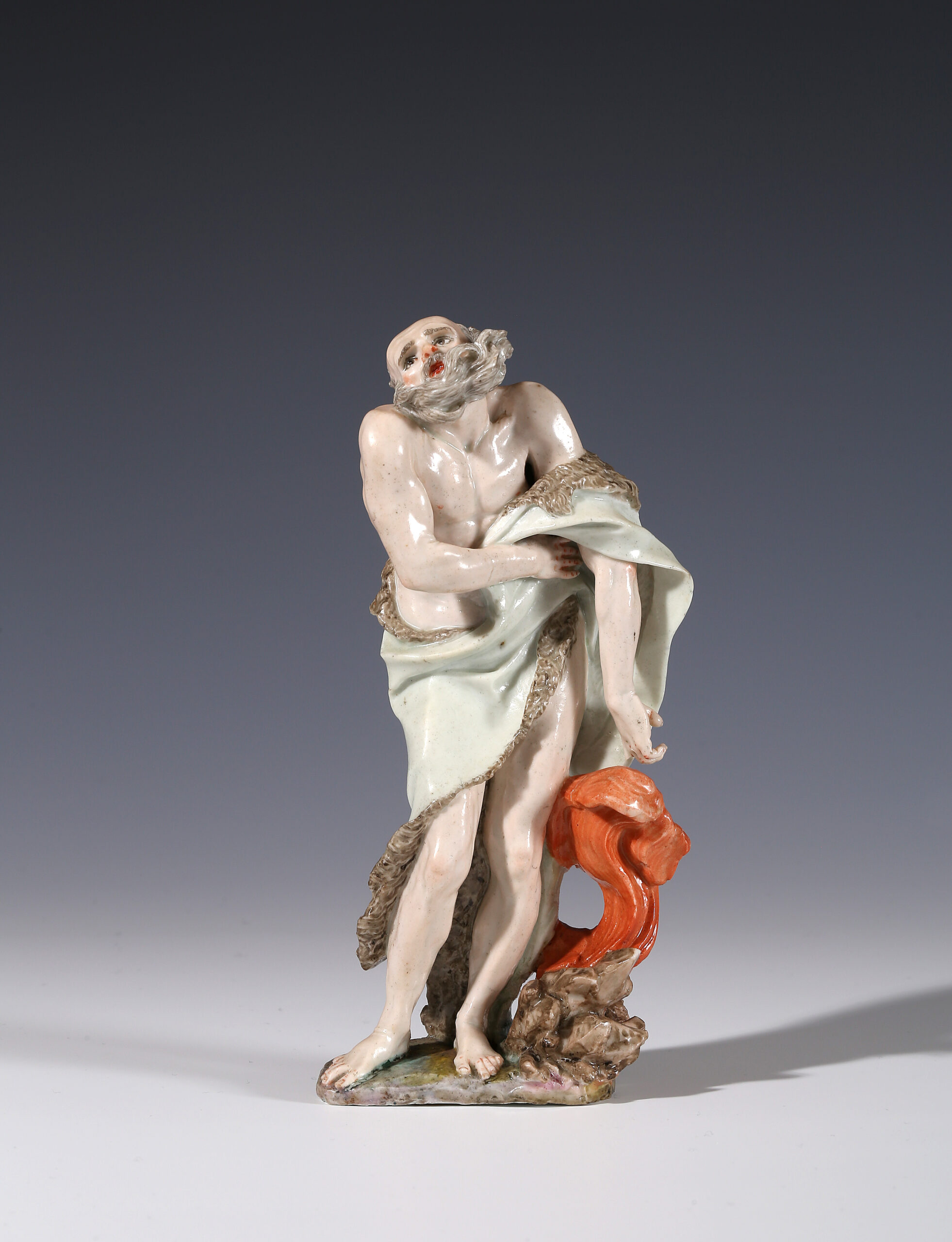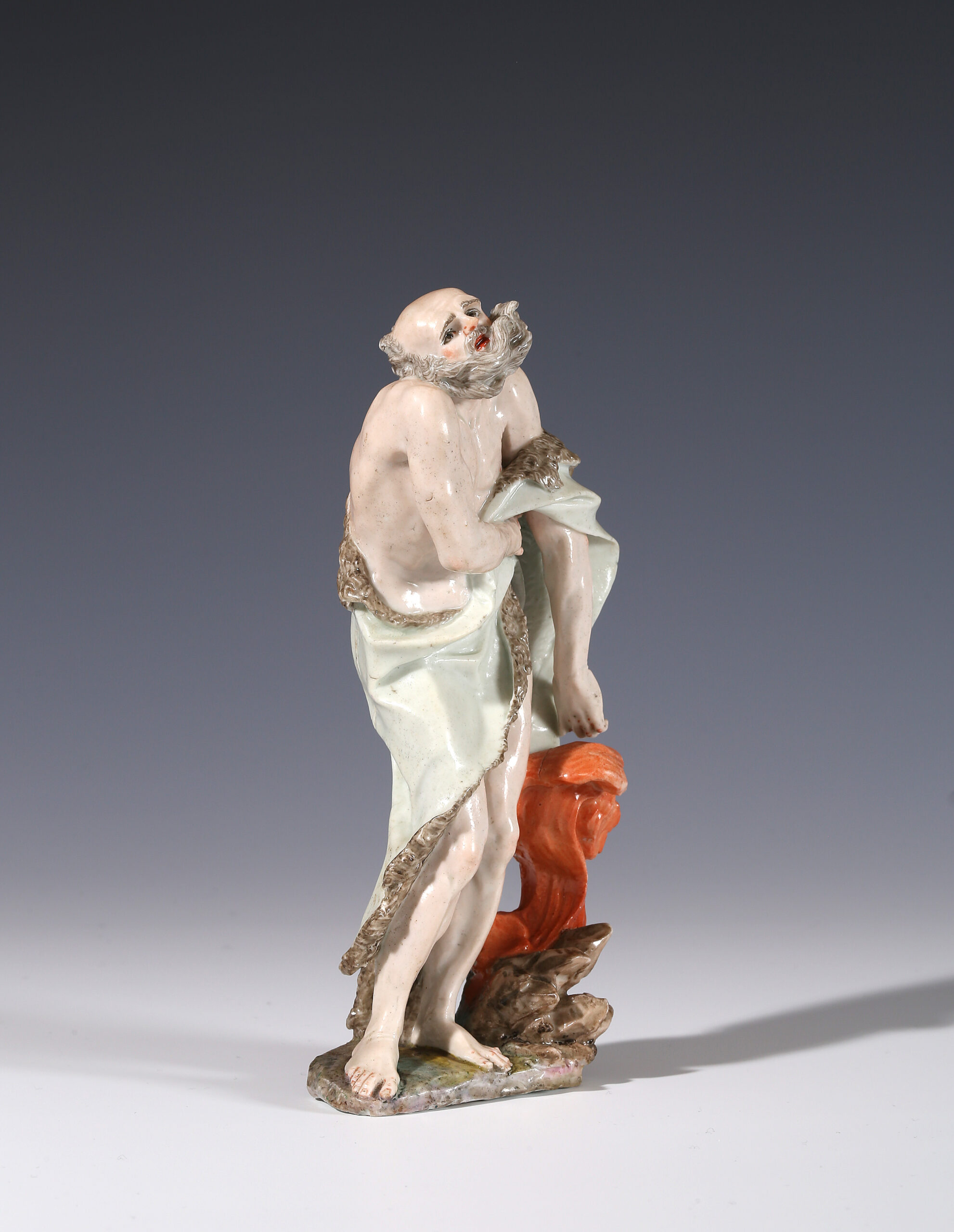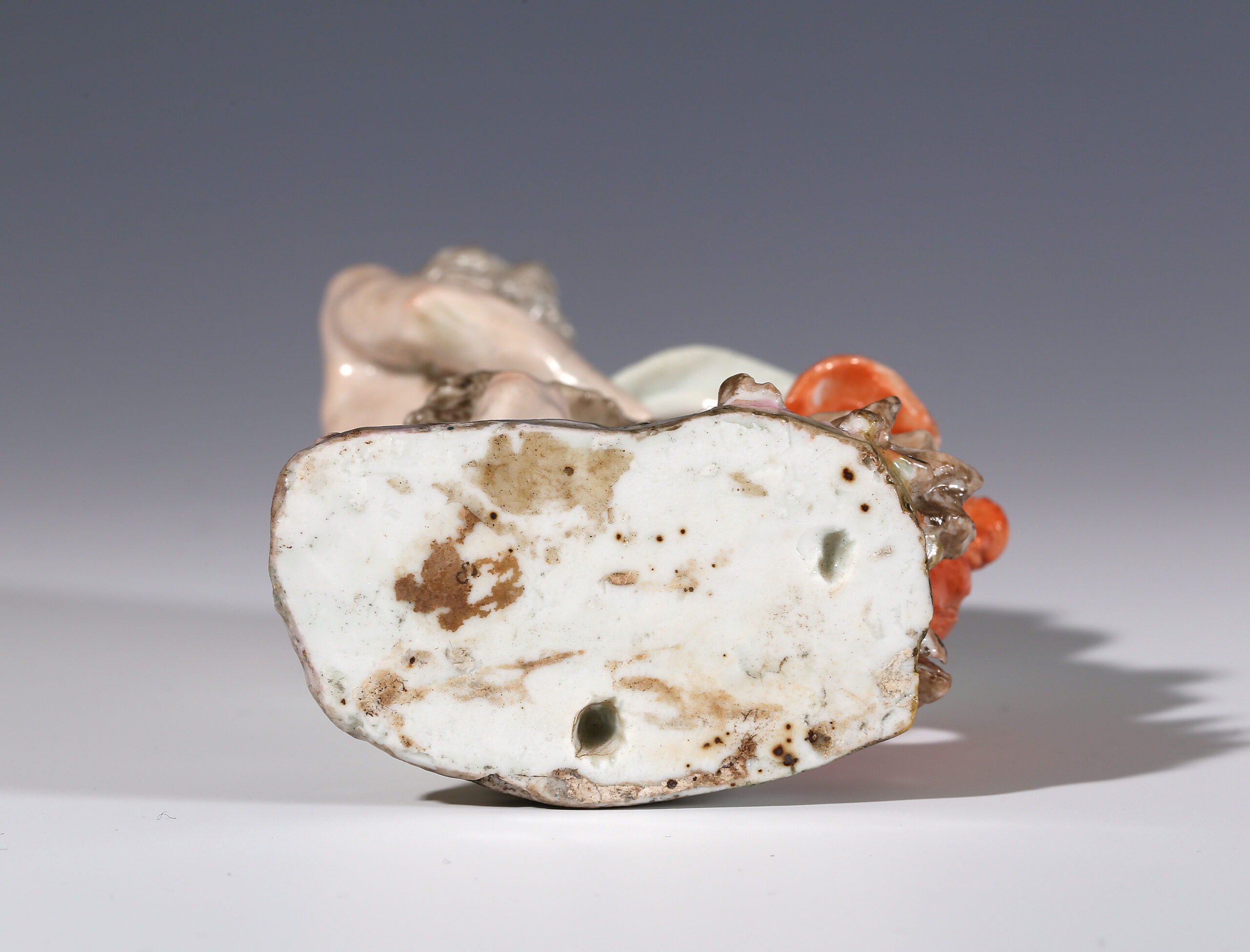Winter powerfully expressing the agony of an old man trying to warm himself against the cold. The grey paste is decorated with thin washes of colour and details highlighting the chilblains on his fingers. Kiln adhesions on his back indicate that he was fired lying on his back as was customary for early Doccia sculpture.
This model carries the dual identity of Vulcan in the Renaissance tradition of depicting the seasons as personifications of Roman gods, the others are Flora for Spring, Ceres for Summer and Bacchus for Autumn.
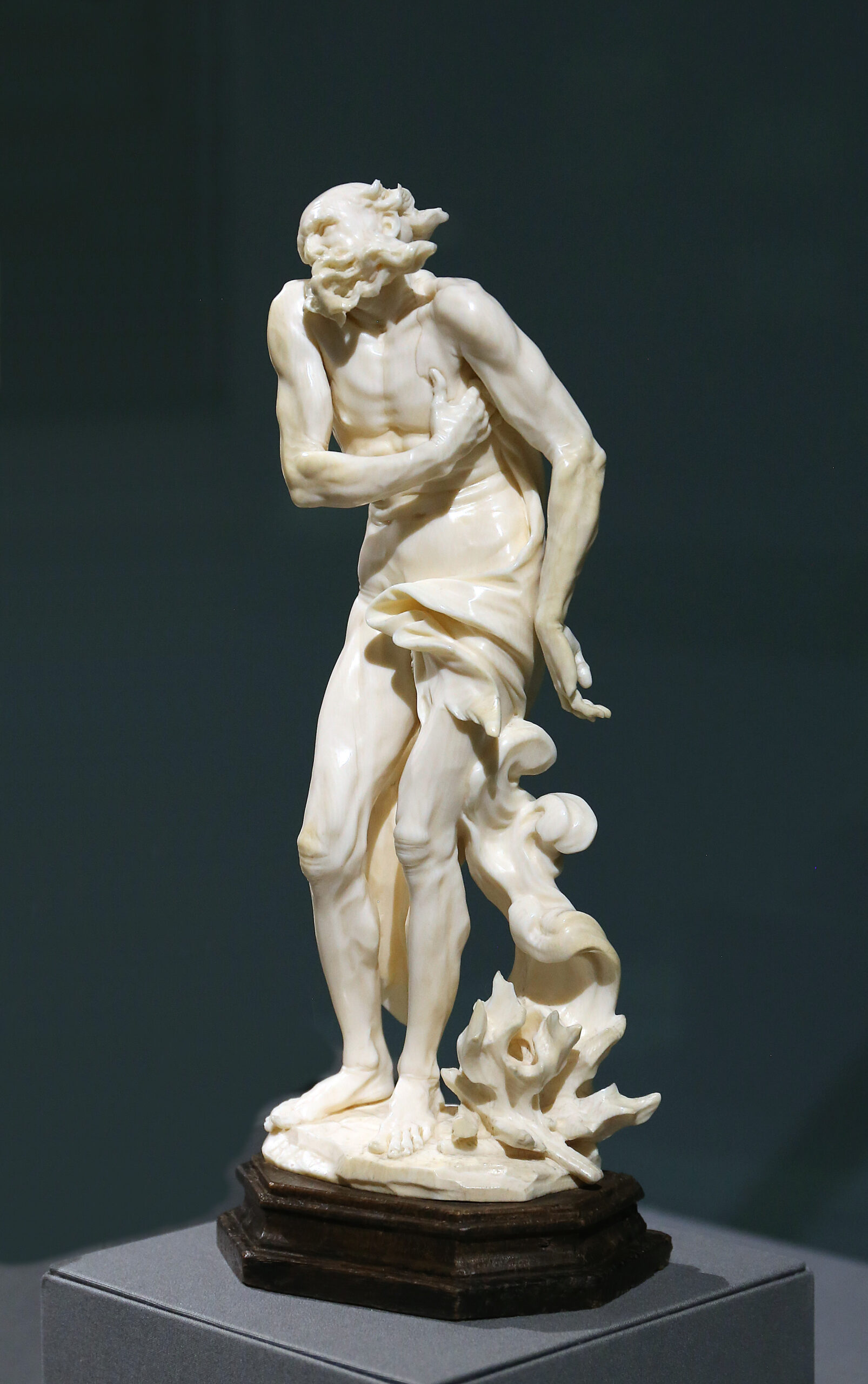
Herzog Anton Ulrich Museum, Braunschweig, 1695
Our figure is taken from an ivory by Balthasar Permoser (1651-1732). The Marchese Carlo Ginori, the founder of the Doccia factory in Florence, was keen to demonstrate that the porcelain of his factory could be a suitable medium for sculpture, to compete with bronze or ivory, to which end he acquired versions, sometimes in wax or plaster, of the best Roman and Florentine sculptors to serve as models.
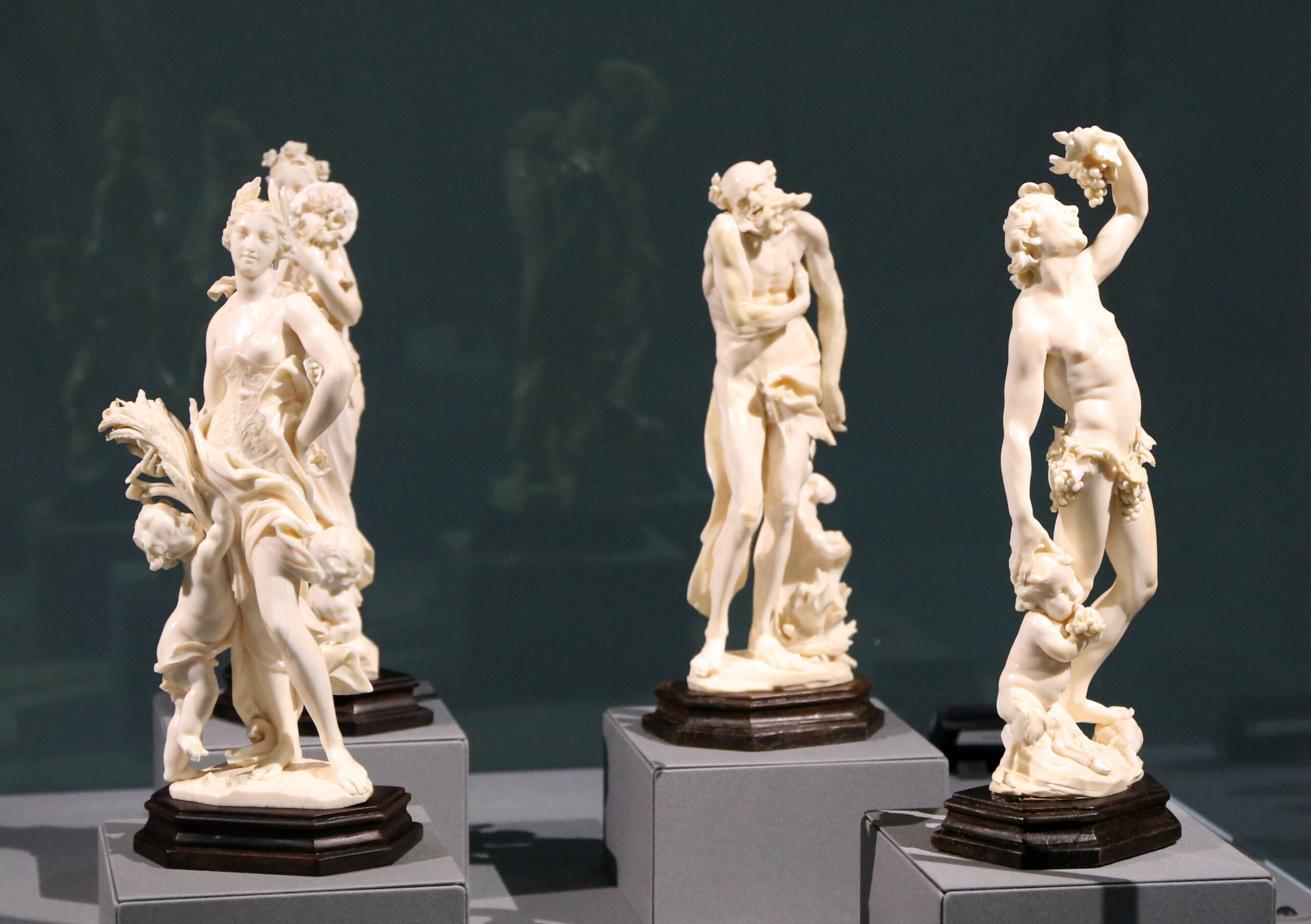
Grünes Gewölbe, Dresden, 1698-99
Balthasar Permoser was one of the leading late baroque sculptors. He trained in south Germany and Austria, where he learned the art of ivory carving. He went to Florence in 1675 spending fourteen years in the studio of Giovanni Battista Foggini working for the Medici. He was summoned to Dresden in 1689 by Johann Georg III, Elector of Saxony where he worked on the stone sculpture of the Zwinger and collaborated with the goldsmith Johann Melchior Dinglinger.
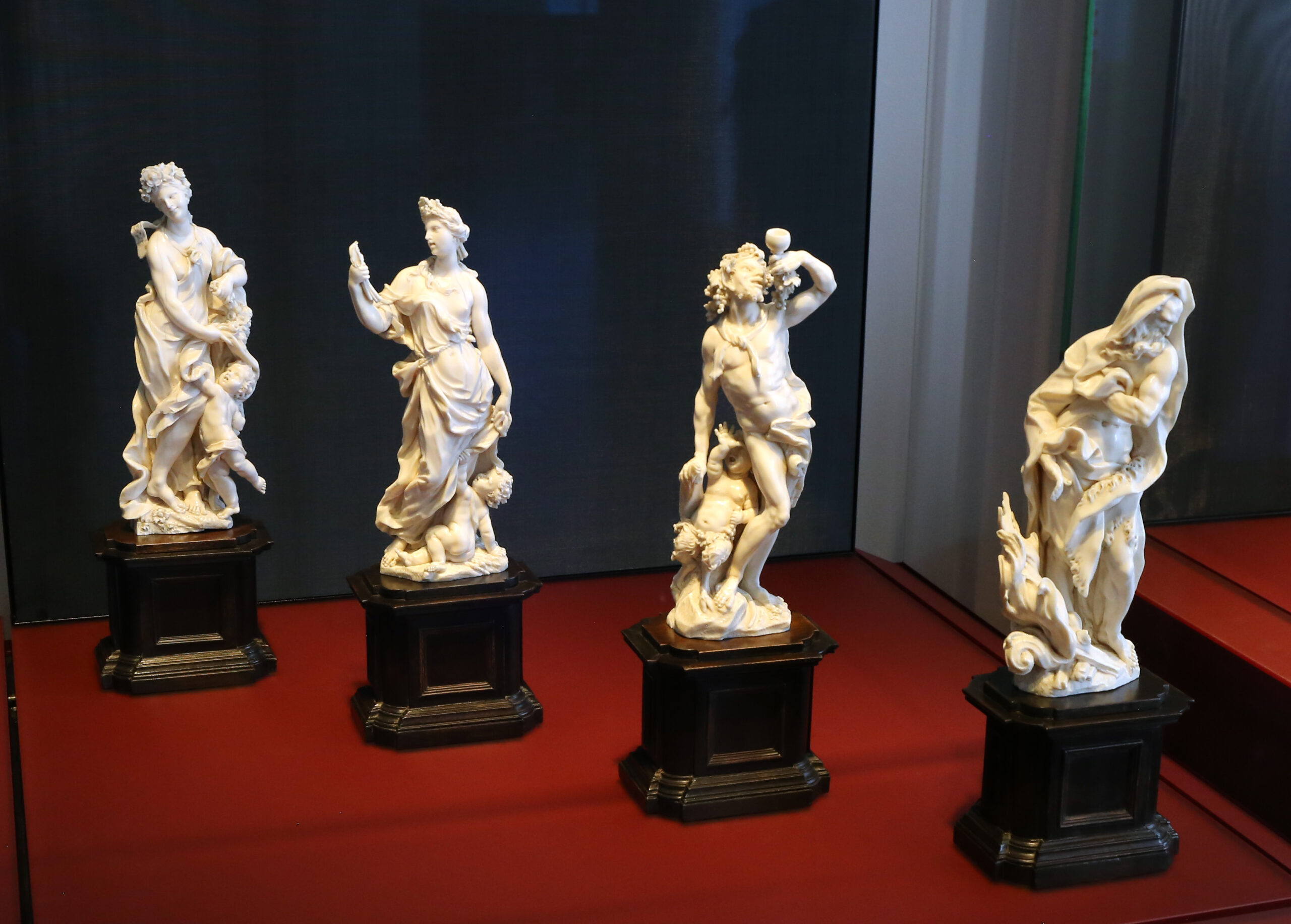
Grünes Gewölbe, Dresden, 1698-99
Two quite different sets of ivory seasons by Permoser are known. One dating from 1698-1699 is in the Grünes Gewölbe, Dresden. The other set signed dated 1695 has recently been reunited in the Herzog Anton Ulrich Museum in Braunschweig having been split up in the Napoleonic wars. The Winter and Autumn of this set were in Harewood House until 2016 when acquired by The Daniel Katz Gallery. The Doccia versions correspond to this latter set.
The Daniel Katz Gallery suggests that there might have been another set of these models, now lost, presumably carved earlier, that remained in Italy to serve as the source for the Doccia factory of Carlo Ginori. Another possibility is that there was no second lost set and that the set now in the Anton Ulrich Museum returned to Florence to Permoser’s old patrons, the Medici, and that copies, perhaps in wax, remained there to later be used as the source for Doccia.
The early history of the Herzog Anton Ulrich set is not known. Although dated 1695, so carved when Permoser was in Dresden, they did not enter the Saxon ducal collections. They were first documented in an inventory of 9 October 1722 belonging to Anton Ulrich’s son, the next Duke of Braunschweig, when they were transferred from the castle of Salzdahlum to Braunschweig. Herzog Anton Ulrich could have acquired them directly from Permoser in Dresden or conceivably on one of his trips to Italy before this date. They later served as models for versions in Furstenberg porcelain remodelled by Anton Carl Luplau, in around 1775/76.
Early versions of this Doccia model are rare. Another coloured example of Winter is in the Museo Correale di Terranova in Sorrento (Winter, 2003, p. 27, fig 25) and we know of a white version in a private collection. The Metropolitan Museum of Art has a slightly later version on a rococo base (Munger 2007, p. 30, ill. 18).
Slightly later the Doccia series was also adapted as candlesticks, Klaus Lankheit notes the four seasons listed in the inventory of the Doccia factory around 1760 “Le quattro Stagioni di Baldassar senza padellina, e con candeliere, alte circa mezzo braccio” (Lankheit 1982).
Condition:
Forefinger of left hand missing
References:
For the Daniel Katz Gallery entry on the ivory examples sold to the Herzog Anton Ulrich Museum see:
https://www.katz.art/artworkdetails/806298/17652/balthasar-permoser-sazburg-1651-dresden
K. Lankheit, Die Modellsammlung der Porzellanmanufaktur Doccia, (1982), pl. 96
J. Munger, ‘La porcellana di Doccia del XVIII secolo al Metropolitan Museum of Art di New York’, in “Quaderni degli amici di Doccia” I (2007),
J.Winter (ed.), Le Statue del Marchese Ginori. Sculture in porcella bianca di Doccia, Firenze 2003
Price: £9,500

